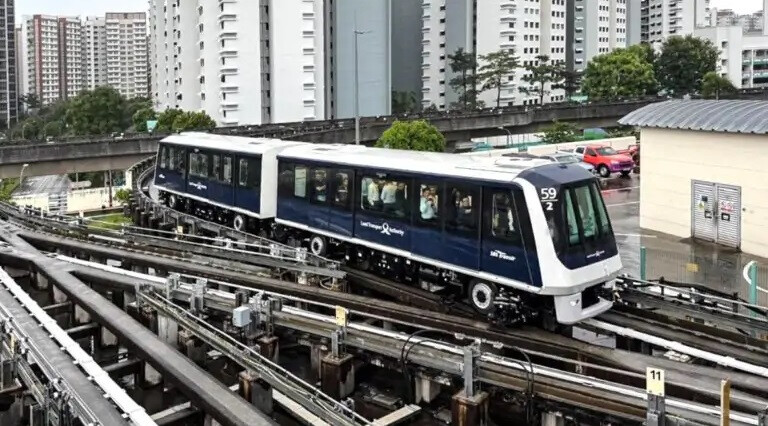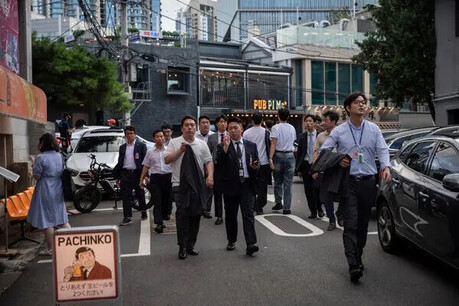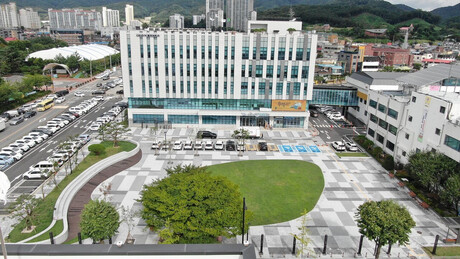
Japanese comprehensive heavy machinery manufacturer Mitsubishi Heavy Industries has successfully delivered the first two sets of rubber-tired light rail vehicles to Singapore, playing a key role in the modernization of Singapore's public transportation system, as reported by railway transport news outlet Railway Supply.
The delivered two-car C810D model, an automated guideway transit (AGT) system, measures 23.5 meters in length per car and can accommodate up to 210 passengers, including 36 seated. These state-of-the-art vehicles are expected to significantly contribute to increasing the transport capacity and operational reliability of Singapore's Light Rail Transit (LRT) lines. Currently undergoing trial runs in Singapore, they are scheduled to commence full commercial operation by the end of the year.
This vehicle supply is part of a total contract worth $400 million signed between Singapore's major public transport operator SBS Transit and Mitsubishi between 2022 and 2023. The contract includes the supply of 25 two-car Crystal Mover rubber-tired LRT train sets, as well as signaling systems and depot equipment.
Mitsubishi is manufacturing these vehicles at its Mihara Plant in Japan, and the remaining 23 train sets are scheduled to be delivered to Singapore sequentially by 2027. These new vehicles will replace the aging C810 models, which were introduced between 2000 and 2003. The existing C810 fleet consists of 25 single-car vehicles and eight two-car sets and has been operating on two of Singapore's main LRT lines, but the vehicles were reaching the end of their service life.
While modernizing its main LRT network, Singapore is also introducing the Innovia APM 300R system from French railway vehicle manufacturer Alstom for another LRT line, the Bukit Panjang LRT. This system employs a different configuration than Mitsubishi's system, making interoperability impossible.
The coexistence of these two systems with different technologies demonstrates Singapore's multifaceted technological approach to public transportation modernization. The Singaporean government aims to provide commuters with improved reliability, comfort, and efficiency through this investment.
Continued investment in next-generation rubber-tired light rail transit is expected to enable Singapore to secure the long-term sustainability of its public transport operations and reduce maintenance costs. Rubber-tired systems are known to have lower noise and vibration levels compared to conventional steel-wheeled systems, are advantageous for operating on steep gradients and curves, and offer some benefits in terms of maintenance.
Singapore's proactive efforts in modernizing its public transportation are seen as a preemptive response to its growing urban population and traffic congestion issues. Building an efficient and modern public transport system is essential for enhancing urban competitiveness and improving the quality of life for its citizens. The introduction of Mitsubishi's new rubber-tired LRT vehicles marks a significant step in these efforts and is expected to positively impact the future development of Singapore's public transportation system.
Meanwhile, rubber-tired light rail vehicles have the advantage of producing less noise and vibration during travel and providing a relatively smooth ride due to their rubber tires. They are also considered more advantageous for operating on steep gradients and sharp curves compared to steel-wheeled vehicles and offer superior acceleration and braking performance. However, they also have disadvantages such as potential maintenance and replacement costs due to rubber tire wear and potentially lower energy efficiency compared to steel-wheeled systems. Singapore appears to have adopted a strategy of introducing rubber-tired LRT systems on specific lines while operating them in parallel with existing steel-wheeled systems, considering these advantages and disadvantages comprehensively.
This delivery of Mitsubishi's vehicles can be seen as another instance reaffirming the long-standing economic cooperation between Singapore and Japan. Japan has been a key infrastructure development partner for Singapore, with ongoing collaboration in various fields such as railways, ports, and energy. By having a Japanese company play a central role in Singapore's public transportation modernization project, the partnership between the two countries is expected to be further strengthened.
Moving forward, Singapore plans to sequentially introduce the remaining 23 train sets to be received from Mitsubishi and continue to promote the introduction of Alstom's Innovia APM 300R system to enhance the overall efficiency and service quality of its public transportation system. Through these efforts, Singapore aims to build a world-class public transportation system and further solidify the foundation for sustainable urban development.
[Copyright (c) Global Economic Times. All Rights Reserved.]





























